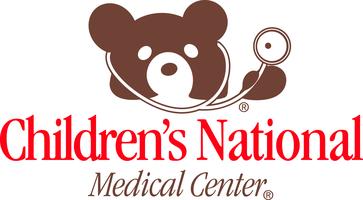Vinorelbine for Children With Progressive or Recurrent Low-grade Gliomas
| Status: | Active, not recruiting |
|---|---|
| Conditions: | Brain Cancer |
| Therapuetic Areas: | Oncology |
| Healthy: | No |
| Age Range: | Any - 18 |
| Updated: | 4/21/2016 |
| Start Date: | July 2011 |
| End Date: | July 2017 |
Phase 2 Study of Weekly Vinorelbine in Children With Progressive or Recurrent Low-Grade Gliomas
The purpose of this study is to investigate whether weekly Vinorelbine treatment can shrink
or slow the growth of pediatric low-grade gliomas that have either returned or are
continuing to grow.
Vinorelbine is a semi-synthetic vinca alkaloid that has recently generated interest in
patients with pediatric low-grade glioma. It has been specifically synthesized to broaden
its therapeutic spectrum and decrease the neurotoxicity associated with related agents.
or slow the growth of pediatric low-grade gliomas that have either returned or are
continuing to grow.
Vinorelbine is a semi-synthetic vinca alkaloid that has recently generated interest in
patients with pediatric low-grade glioma. It has been specifically synthesized to broaden
its therapeutic spectrum and decrease the neurotoxicity associated with related agents.
Different treatments exist for children with progressive or recurrent low-grade glioma. Each
has variable efficacy at slowing or reversing growth, and exploration continues into finding
better-tolerated, more effective treatments.
Vinorelbine has recently generated interest in stabilizing some pediatric low-grade gliomas.
It has been fairly well tolerated in both adult and pediatric studies that have examined its
use in other tumors.
Objective: To test the efficacy of Vinorelbine in children with pediatric low-grade glioma
that has returned or continues to grow.
In this trial, Vinorelbine will be given intravenously once a week for 6 weeks followed by a
2 week rest (6 of every 8 weeks) for one year. The patients will then be followed for 60
months. Progression free survival is the primary outcome and defined as the none of the
following: greater a 20% increase in the sun of the longest diameter of the target lesion,
or a measurable increase in a non-target lesion, or the appearance of new lesions.
has variable efficacy at slowing or reversing growth, and exploration continues into finding
better-tolerated, more effective treatments.
Vinorelbine has recently generated interest in stabilizing some pediatric low-grade gliomas.
It has been fairly well tolerated in both adult and pediatric studies that have examined its
use in other tumors.
Objective: To test the efficacy of Vinorelbine in children with pediatric low-grade glioma
that has returned or continues to grow.
In this trial, Vinorelbine will be given intravenously once a week for 6 weeks followed by a
2 week rest (6 of every 8 weeks) for one year. The patients will then be followed for 60
months. Progression free survival is the primary outcome and defined as the none of the
following: greater a 20% increase in the sun of the longest diameter of the target lesion,
or a measurable increase in a non-target lesion, or the appearance of new lesions.
Inclusion Criteria:
- Age: < 18 years
- Tumor: Progressive or recurrent low grade glioma, WHO grade 1 or 2 who have failed at
least one form of 'conventional' non-surgical therapy
- Histologic confirmation is required with the exception of optic pathway and brain
stem gliomas. Patients are not required to have a re-operation at time of recurrence.
- Patients with disseminated disease are eligible.
- Children with neuro-fibromatosis and optic pathway or brainstem tumors are eligible
but must have definitive radiologic or clinical evidence of progression
- Patients must have evidence of measureable disease
- Performance status: Karnofsky or Lansky performance status of >50%
- Organ Function:
- Adequate bone marrow function (ANC>1000/mm3, platelet count of >75,000/mm3, and
hemoglobin > 8gm/dL) prior to starting therapy. Hemoglobin may be supported by
transfusion
- Adequate liver function (SGPT/ALT<2.5 times ULN and bilirubin < 1.5 times ULN) prior
to starting therapy
- Prior therapy:
- May have had treatment including surgery, chemotherapy, or radiotherapy for any
number of relapses prior to enrollment
- Patients must have received their last fraction of radiotherapy >12 weeks prior to
starting therapy
- Previous Vincristine or Vinblastine exposure is allowable.
Exclusion Criteria:
- No other significant medical illness that in the investigators' opinion cannot be
adequately controlled with appropriate therapy or would compromise the patient's
ability to tolerate this therapy
- Any other cancer (except non-melanoma skin cancer), unless in complete remission and
off of all therapy for that disease for a minimum of 3 years.
- Patients of childbearing potential must not be pregnant or breast-feeding
(vinorelbine is a pregnancy category D, no data on excretion in breastmilk)
- Patients of childbearing or fathering potential must practice adequate contraception
We found this trial at
2
sites
111 Michigan Ave NW
Washington, District of Columbia
Washington, District of Columbia
(202) 476-5000

Childrens National Medical Center As the nation’s children’s hospital, the mission of Children’s National Medical...
Click here to add this to my saved trials
Click here to add this to my saved trials